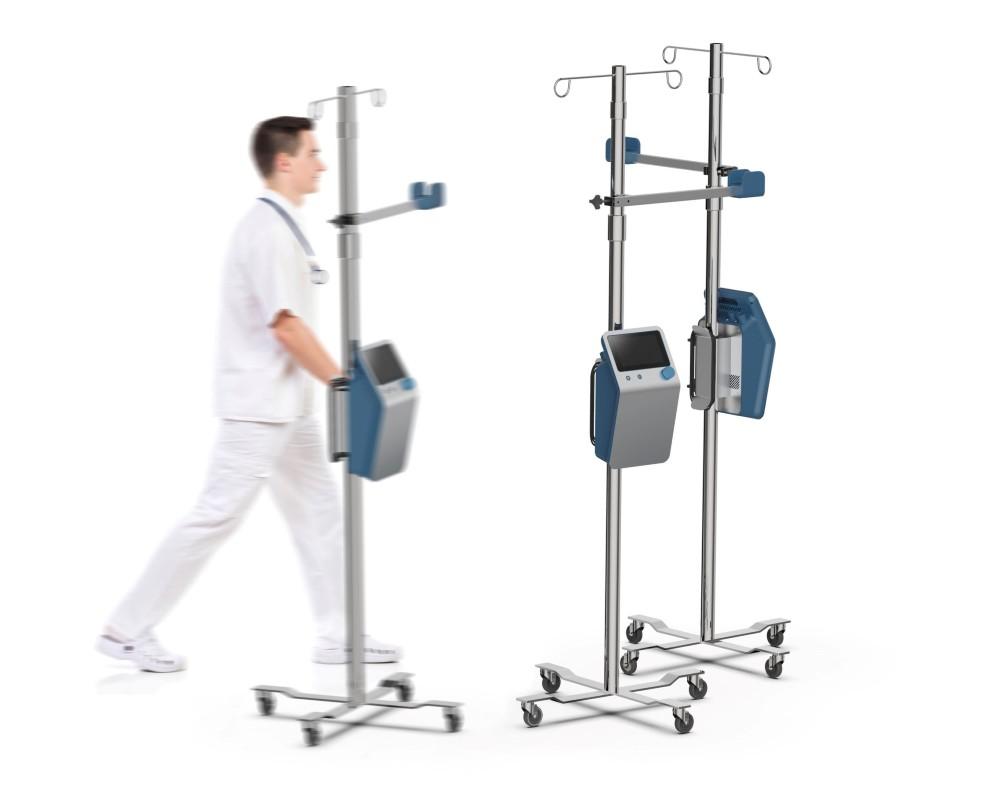- FMA
- The Fabricator
- FABTECH
- Canadian Metalworking
Our Publications
Categories
- Additive Manufacturing
- Aluminum Welding
- Arc Welding
- Assembly and Joining
- Automation and Robotics
- Bending and Forming
- Consumables
- Cutting and Weld Prep
- Electric Vehicles
- En Español
- Finishing
- Hydroforming
- Laser Cutting
- Laser Welding
- Machining
- Manufacturing Software
- Materials Handling
- Metals/Materials
- Oxyfuel Cutting
- Plasma Cutting
- Power Tools
- Punching and Other Holemaking
- Roll Forming
- Safety
- Sawing
- Shearing
- Shop Management
- Testing and Measuring
- Tube and Pipe Fabrication
- Tube and Pipe Production
- Waterjet Cutting
Industry Directory
Webcasts
Podcasts
FAB 40
Advertise
Subscribe
Account Login
Search
Entrants submit more than 200 designs for mechanical ventilators challenge
Hospital, medical designer, and 3D printer company host a contest and get a big response
- By William Leventon
- May 11, 2020
- Article
- Additive Manufacturing
Breathing may soon be easier for many people stricken by the coronavirus, thanks in part to 3D printing technology aimed at speeding up development of a no-frills mechanical ventilator that can be made quickly and sent wherever it’s needed.
Producing such a ventilator is the goal of the sponsors of the CoVent-19 Challenge, which launched April 1. The Challenge is the brainchild of a group of Boston-area anesthesiology residents.
“We are experts in mechanical ventilation, and we knew that we were going to have a shortage of ventilators—not only in the U.S. but everywhere in the world” as the coronavirus spread, said Diana Barragan-Bradford, an anesthesiologist at Massachusetts General Hospital and co-director of the Challenge.
Besides the sheer number of people contracting COVID-19, the ventilator shortage is made more acute by the unique demands of individual cases. While people with conditions such as pneumonia might require a ventilator for three days or so, the average mechanical ventilation time for COVID-19 patients is about 10 days, Barragan-Bradford noted. That means it takes 10 days before a ventilator being used is available for the next patient.
“So we felt that we needed to do something to increase the number of ventilators,” she said.
Simple Design Sought
The objective of those entering the CoVent-19 Challenge is to design a rapidly deployable ventilator with just enough parts and features to do its job.
Traditional ventilators used in a hospital are sophisticated machines, Barragan-Bradford said. “They are expensive and made up of a lot of pieces, and you need a lot of time to build them. Even if you try to speed up the [manufacturing] process, they cannot meet the needs of the number of pandemic patients that are going to require mechanical ventilation. So our thought was that we needed a simple ventilator with the minimum [requirements] that a ventilator needs for these types of patients.”
Open to everyone, the CoVent-19 Challenge will award $10,000 in credit from Stratasys Direct Manufacturing—an online 3D printing service—to be split among the top three entrants.
Round 1 of the Challenge ended May 1. Round 2, which is by invitation only, runs May 5-27. Renderings and brief descriptions of the seven finalists’ designs appear here.

Fuse Project was one of seven finalists selected to participate in Round 2 of the CoVent-19 Challenge. Fuse Project
Those who reached the second round will work with medical and technical experts to develop and test functional prototypes. The winning design will be announced June 21. (Note: The original date for the announcement was June 1, but it was changed to June 21 after our publication date.-Ed.)
One of the corporate sponsors of the CoVent-19 Challenge is 3D printer manufacturer Stratasys Inc., Eden Prairie, Minn. Stratasys will co-host the design and prototyping phase of the Challenge and provide 3D printing consulting and services to the finalists.
In addition, the company’s GrabCAD site is being used to host the Challenge.
Another sponsor is Ximedica LLC, a Providence, R.I., firm that partners with health care companies to design and develop medical devices and diagnostic equipment.
One of Ximedica’s first contributions to the Challenge was producing and publicizing a document that lays out the functional requirements that the ventilator designs must meet, said Joe Gordon, vice president of innovation. Ximedica also will work with regulatory agencies to take the winning ventilator design through the testing necessary to ensure compliance with standards.
AM for Prototyping
While production of the winning design likely will involve traditional manufacturing methods such as injection molding, additive manufacturing has been designated as the preferred method for prototyping the design entries. One reason for this is that AM puts no pressure on the existing ventilator parts supply chain.
“Right now, a lot of people are trying to ramp up production of existing ventilators, so some of the parts for those ventilators are already in short supply,” Barragan-Bradford said.
In addition, AM meets the need for prototyping speed. “Time is of the essence, so we need to get the designs to iterate as quickly as possible to reach the final design,” said Abe Gladstone, GrabCAD software marketing manager. Gladstone assisted in putting the CoVent Challenge on GrabCAD, a cloud-based environment that helps engineering teams manage, view, and share CAD files.
“With traditional manufacturing techniques, you have to create a new tool or a whole new mold [for each design iteration], and that takes time,” Gladstone noted. “But with additive manufacturing and the software we have today, you can go straight from CAD to printing.”

Dr. Diana Barragan-Bradford is an anesthesiologist at Mass General and co-director of the CoVent-19 Challenge. Massachusetts General Hospital
While it’s up to the Challenge finalists to determine how they want to manufacture their prototypes, Gordon reports that help in this regard has been offered by both Stratasys and Los Angeles-based SprintRay Inc., which makes 3D printers for the dental market.
At Stratasys, the AM processes that will be used for prototyping are fused deposition modeling (FDM) and PolyJet. In FDM, a thermoplastic filament is melted and extruded from a printhead as a bead. Once extruded, the material is immediately set in the high-temperature machine environment and layered on a platform. In the PolyJet process, a carriage jets photopolymers onto the work space. The photopolymers are cured by ultraviolet light, forming a thin layer.
Since FDM is geared more toward producing functional parts, Gladstone believes it will probably be more useful to Challenge finalists than Polyjet. Polyjet parts are softer and more fragile, and they can be made in more colors and with other design aesthetics not available with FDM.
In this case, however, said Gladstone, “we don’t need the ventilator to look pretty when we iterate it. We need to make sure it’s functional.”
Passing the Test
Once the prototypes are produced, they must be tested. According to Gordon, Ximedica plans to help here by offering test-fixture examples and different ways of conducting verification-level testing. The design teams can take this guidance and run their own testing.
In addition, Ximedica has lined up a company willing to donate some of its equipment for the testing process.
Testing will be used to determine if each ventilator design meets the contest’s functional requirements and is safe. “We don’t want to cause any harm,” Barragan-Bradford said. “So we are going to be putting the prototypes into testing to make sure they are achieving what they are supposed to achieve, and also that they are actually safe to use.”
When a winning design is chosen June 1, Barragan-Bradford is certain there will still be a need for it. “Social distancing has [produced] a very good result in flattening the curve of contagion in general,” she said. “But there are countries that haven’t even peaked yet, so they are going to need the ventilators.”
About the Author

William Leventon
(609) 926-6447
About the Publication
- Podcasting
- Podcast:
- The Fabricator Podcast
- Published:
- 04/16/2024
- Running Time:
- 63:29
In this episode of The Fabricator Podcast, Caleb Chamberlain, co-founder and CEO of OSH Cut, discusses his company’s...
- Trending Articles
- Industry Events
16th Annual Safety Conference
- April 30 - May 1, 2024
- Elgin,
Pipe and Tube Conference
- May 21 - 22, 2024
- Omaha, NE
World-Class Roll Forming Workshop
- June 5 - 6, 2024
- Louisville, KY
Advanced Laser Application Workshop
- June 25 - 27, 2024
- Novi, MI



























